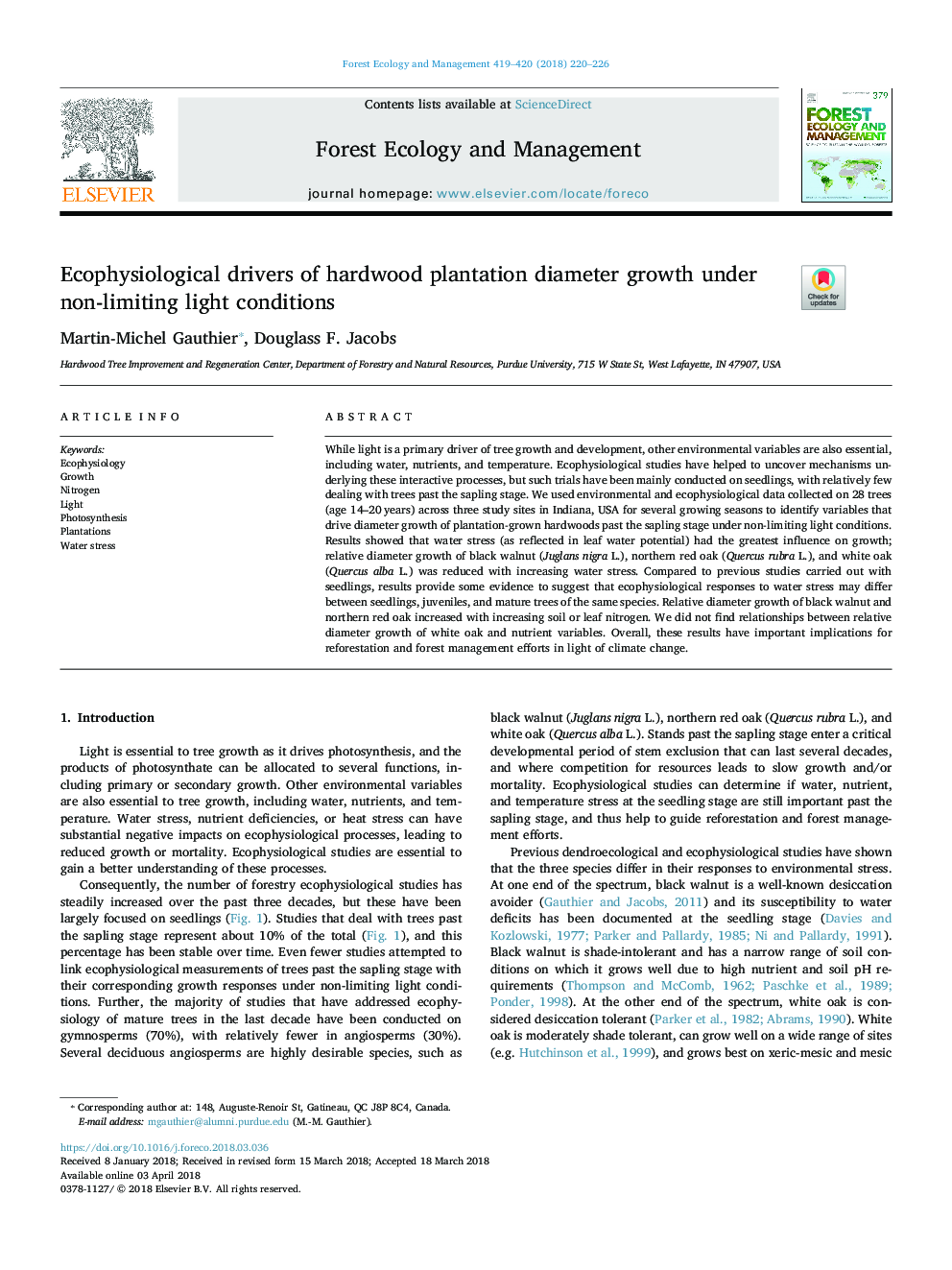| Article ID | Journal | Published Year | Pages | File Type |
|---|---|---|---|---|
| 6541720 | Forest Ecology and Management | 2018 | 7 Pages |
Abstract
While light is a primary driver of tree growth and development, other environmental variables are also essential, including water, nutrients, and temperature. Ecophysiological studies have helped to uncover mechanisms underlying these interactive processes, but such trials have been mainly conducted on seedlings, with relatively few dealing with trees past the sapling stage. We used environmental and ecophysiological data collected on 28 trees (age 14-20â¯years) across three study sites in Indiana, USA for several growing seasons to identify variables that drive diameter growth of plantation-grown hardwoods past the sapling stage under non-limiting light conditions. Results showed that water stress (as reflected in leaf water potential) had the greatest influence on growth; relative diameter growth of black walnut (Juglans nigra L.), northern red oak (Quercus rubra L.), and white oak (Quercus alba L.) was reduced with increasing water stress. Compared to previous studies carried out with seedlings, results provide some evidence to suggest that ecophysiological responses to water stress may differ between seedlings, juveniles, and mature trees of the same species. Relative diameter growth of black walnut and northern red oak increased with increasing soil or leaf nitrogen. We did not find relationships between relative diameter growth of white oak and nutrient variables. Overall, these results have important implications for reforestation and forest management efforts in light of climate change.
Related Topics
Life Sciences
Agricultural and Biological Sciences
Ecology, Evolution, Behavior and Systematics
Authors
Martin-Michel Gauthier, Douglass F. Jacobs,
